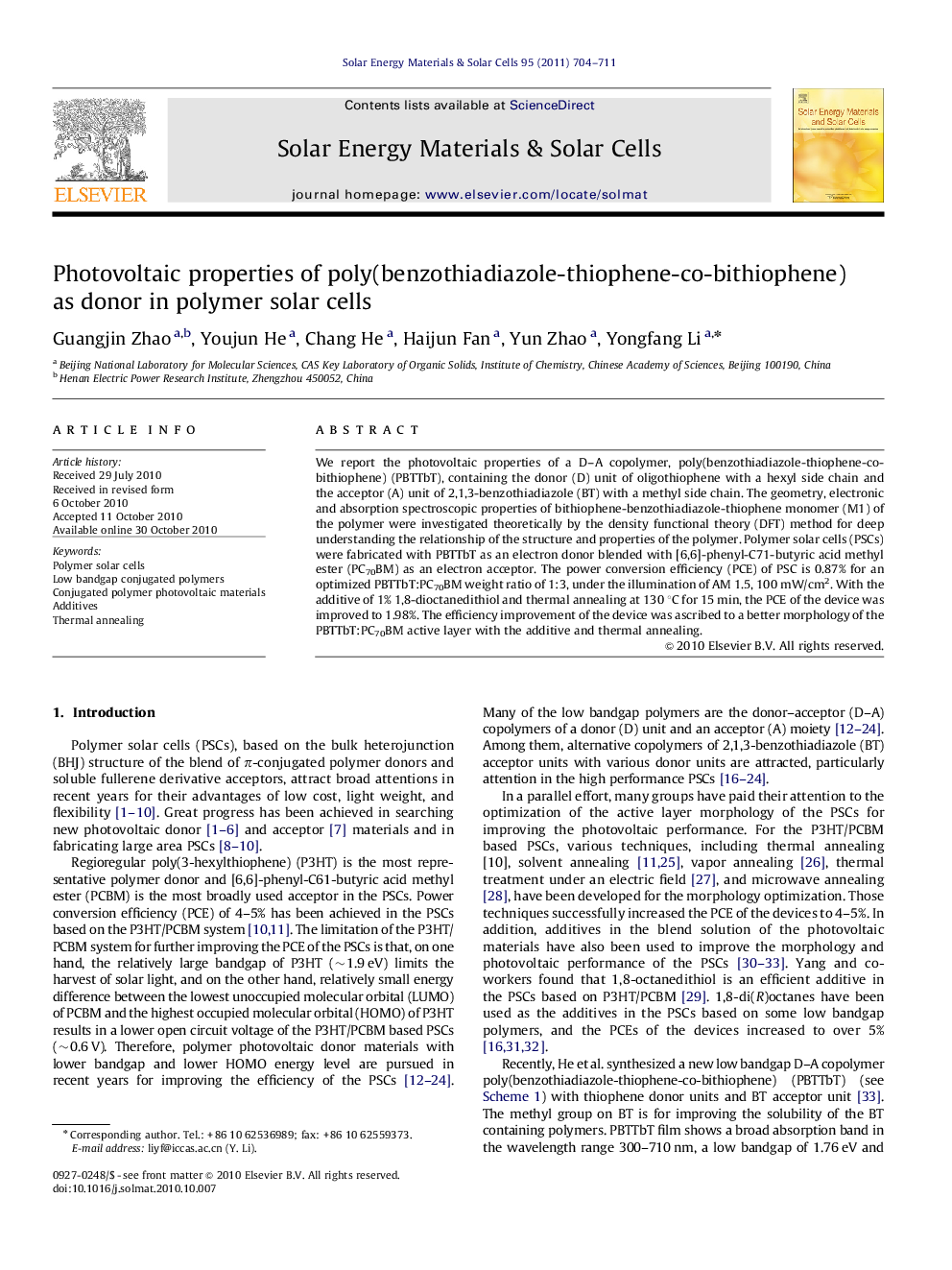| Article ID | Journal | Published Year | Pages | File Type |
|---|---|---|---|---|
| 79244 | Solar Energy Materials and Solar Cells | 2011 | 8 Pages |
We report the photovoltaic properties of a D–A copolymer, poly(benzothiadiazole-thiophene-co-bithiophene) (PBTTbT), containing the donor (D) unit of oligothiophene with a hexyl side chain and the acceptor (A) unit of 2,1,3-benzothiadiazole (BT) with a methyl side chain. The geometry, electronic and absorption spectroscopic properties of bithiophene-benzothiadiazole-thiophene monomer (M1) of the polymer were investigated theoretically by the density functional theory (DFT) method for deep understanding the relationship of the structure and properties of the polymer. Polymer solar cells (PSCs) were fabricated with PBTTbT as an electron donor blended with [6,6]-phenyl-C71-butyric acid methyl ester (PC70BM) as an electron acceptor. The power conversion efficiency (PCE) of PSC is 0.87% for an optimized PBTTbT:PC70BM weight ratio of 1:3, under the illumination of AM 1.5, 100 mW/cm2. With the additive of 1% 1,8-dioctanedithiol and thermal annealing at 130 °C for 15 min, the PCE of the device was improved to 1.98%. The efficiency improvement of the device was ascribed to a better morphology of the PBTTbT:PC70BM active layer with the additive and thermal annealing.
Graphical AbstractPower conversion efficiency of the polymer solar cells based on poly(benzothiadiazole-thiophene-co-bithiophene) (PBTTbT) as donor and [6,6]-phenyl-C71-butyric acid methyl ester (PC70BM) as acceptor reached 1.98% with open circuit voltage of 0.72 V, short circuit current of 8.26 mA/cm2 and fill factor of 33.4%, under the irradiation of AM1.5, 100 mW/cm2, at the optimized conditions of PBTTbT:PC70BM = 1:3 (w/w), with additive of 1,8-octanedithiol and post-thermal annealing at 130 °C for 15 minutes.Figure optionsDownload full-size imageDownload as PowerPoint slide
